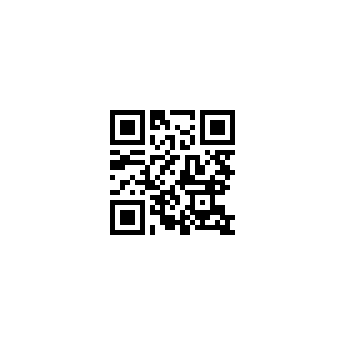
Security News
38% of CISOs Fear They’re Not Moving Fast Enough on AI
CISOs are racing to adopt AI for cybersecurity, but hurdles in budgets and governance may leave some falling behind in the fight against cyber threats.
JavaScript library for generating tiny QR codes for your web pages.
qrize integrates with URL shortener service, giving you tiny QR codes no matter how long a URL is.
Compare these QR codes that lead to the same long address (313 symbols):
| Regular QR code :hankey: | QR code you get with qrize :+1: |
|---|---|
 |  |
Having QR codes smaller makes it more reader-friendly, saves space on page and is awesome. Visit qrize.me for general information.
To install qrize with Yarn, run:
yarn add qrize
To install qrize with npm, run:
npm install --save qrize
If you don’t want to use npm to manage client packages, qrize package also provides a single-file distribution, which is hosted on a CDN:
<script src="https://unpkg.com/qrize/dist/qrize.umd.js"></script>
import Qrize from "qrize";
const qrize = new Qrize({
element: document.getElementById("qr-target")
});
qrize.createImg({ url: "http://example.com" });
That's it. An element with id #qr-target will contain <img> tag representing a QR code that leads to http://example.com.
If you use UMD package from CDN, Qrize constuctor is available globally.
Qrize constuctor takes an options object as a parameter and these are available properties:
| Name | Type | Required | Description |
|---|---|---|---|
| element | DOM Element | yes | Container element for the generated QR code. |
| cellSize | Number | no | Size of each grid cell in pixels. Default: 2. |
| margin | Number | no | Size of margin around the QR code in pixels. Note that you might want to leave some space around your QR code in order to make it readable. Default: 0. |
Instantiated object returned by new Qrize() has three methods with pretty straightforward purposes:
createImg()createSvg()createTable()Each method can take (not requred) an options object with following parameters:
| Name | Type | Required | Description |
|---|---|---|---|
| url | String | no | A URL that QR code will lead to. Defaults to a current page address. Default: window.location.href. |
| onSuccess | Function | no | A callback that will be called after successful QR code build. Is invoked with an object that has two properties: hash and provided url. |
| onFailure | Function | no | A callback that will be called after an attempt to build a QR code has been failed. |
There are also static Qrize methods that communicate with qrize.me API directly:
getHash() - get unique hash id of the given URL. Options properties:| Name | Type | Required | Description |
|---|---|---|---|
| url | String | yes | A URL you want to get a hash id of. |
| onSuccess | Function | no | A callback that will be called on successful API response. Is invoked with an object that has two properties: hash and provided url. |
| onFailure | Function | no | A callback that will be called if request failed. Is invoked with two arguments: error status code and error message. |
getUrl() - get URL of the given hash id. Options properties:| Name | Type | Required | Description |
|---|---|---|---|
| hash | String | yes | A hash id you want to get a URL of. |
| onSuccess | Function | no | A callback that will be called on successful API response. Is invoked with an object that has two properties: url and provided hash. |
| onFailure | Function | no | A callback that will be called if request failed. Is invoked with two arguments: error status code and error message. |
You probably won't need them, but if you will, you can use them like this:
import Qrize from "qrize";
Qrize.getHash({
url: 'http://example.com',
onSuccess({ hash }) {
console.log(hash);
}
})
Qrize.getUrl({
hash: '8jLDWGQ',
onSuccess({ url }) {
console.log(url);
}
})
MIT
QR Code is registered trademark of DENSO WAVE INCORPORATED.
FAQs
JavaScript library for generating tiny QR codes of your web pages
The npm package qrize receives a total of 0 weekly downloads. As such, qrize popularity was classified as not popular.
We found that qrize demonstrated a not healthy version release cadence and project activity because the last version was released a year ago. It has 1 open source maintainer collaborating on the project.
Did you know?

Socket for GitHub automatically highlights issues in each pull request and monitors the health of all your open source dependencies. Discover the contents of your packages and block harmful activity before you install or update your dependencies.

Security News
CISOs are racing to adopt AI for cybersecurity, but hurdles in budgets and governance may leave some falling behind in the fight against cyber threats.

Research
Security News
Socket researchers uncovered a backdoored typosquat of BoltDB in the Go ecosystem, exploiting Go Module Proxy caching to persist undetected for years.

Security News
Company News
Socket is joining TC54 to help develop standards for software supply chain security, contributing to the evolution of SBOMs, CycloneDX, and Package URL specifications.